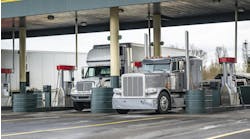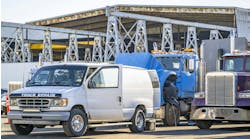Increased implementation of collision avoidance systems and eliminating distracted driving are two of the items on the National Transportation Safety Board’s 2019-20 Most Wanted List of Transportation Safety. The complete list has 10 items, six of which apply to trucking and truck drivers.
It is interesting to me that the list includes both technologies and behaviors as a way to improve safety on the roads. In a recent blog post, I talked about how safety is everyone’s responsibility. I think the NTSB’s wish list underscores that point.
NTSB is hoping that the National Highway Traffic Safety Administration will require vehicle manufacturers to make collision avoidance systems and automated emergency braking standard on new vehicles. I am in favor of that proposal, but also think there is no need for fleets to wait until they become mandatory to begin routinely spec’ing them on new vehicles they purchase.
NTSB also wants states to ban drivers from using portable electronic devices when operating a motor vehicle — except when being used for navigation — and recommends that states add driver distraction to traffic accident investigation forms. This is another good idea, but again one that fleets need to begin enforcing themselves, instead of waiting for legislation.
If you do not already have a cell phone ban for your drivers, I suggest you consider implementing one and explaining in your driver training why you have instituted the ban. The statistics on accidents that are thought to be the result of distracted driving are alarming. NHTSA statistics show that nearly 3,500 people died because of distracted driving in 2016 and close to 400,000 were injured in motor vehicle crashes involving distracted driving. Operating a medium- or heavy-duty truck, even one equipped with all the advanced safety features — requires the driver’s full and complete attention.
One other thing NTSB has on its wish list is the implementation of a comprehensive strategy to reduce speeding-related crashes. It hopes that NHTSA will develop standards requiring speed limiters on all new trucks and buses. Some fleets are already using their vehicle’s electronic engine parameters to set both pedal and cruise speed limits. Federal Motor Carrier Safety Alliance statistics show that speed was a factor in 17% of truck crashes with at least one large truck occupant fatality.
If you are interested, use this link to check out all of NTSB’s recommendations. But even if you don’t check out the longer list, at least spend a few minutes reviewing your safety outlook both from an equipment and operational practices standpoint. I don’t know any fleet that is against safety; but some of you are clearly doing more about it than others.



